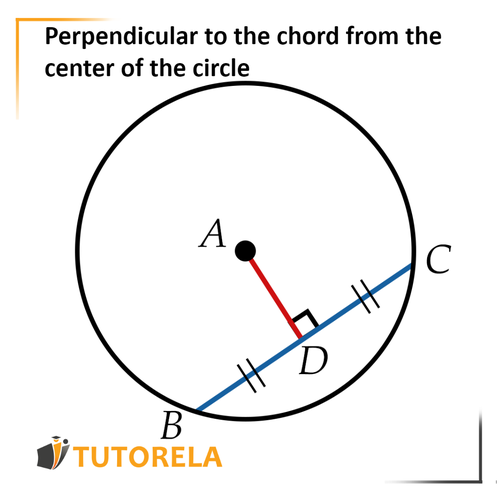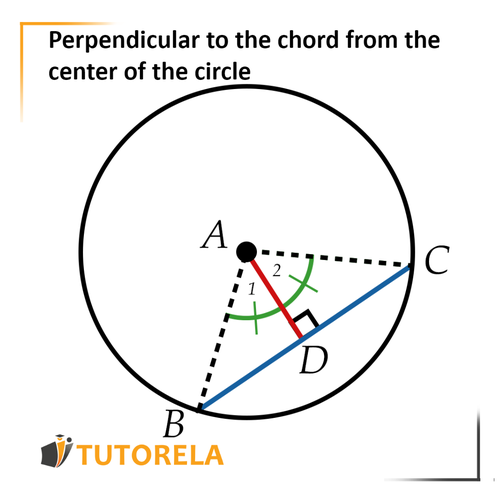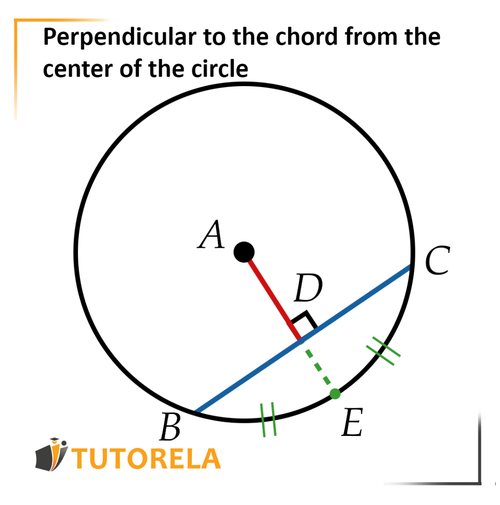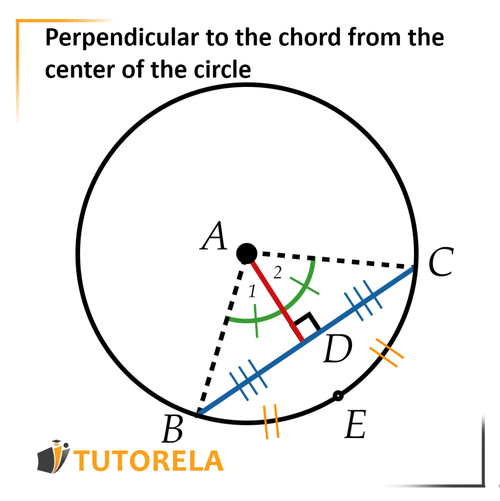The perpendicular to the chord comes out of the center of the circle, intersecting the chord, the central angle in front of the chord and the arc in front of the chord.
Moreover, if there is a section that comes out from the center of the circle and crosses the chord, it will also be perpendicular to the chord.
We are here to present the properties of the perpendicular from the center of the circle to the chord.
First, we will remember that the perpendicular is a line that forms a degree angle.
Let's see it in the illustration:

In front of us, there is a circle.
We will mark the center of the circle with a letter
Our chord will be blue and will be called .
The vertical, which comes out from the center of the circle and will be perpendicular to the chord .
We will mark it in red and call it .













